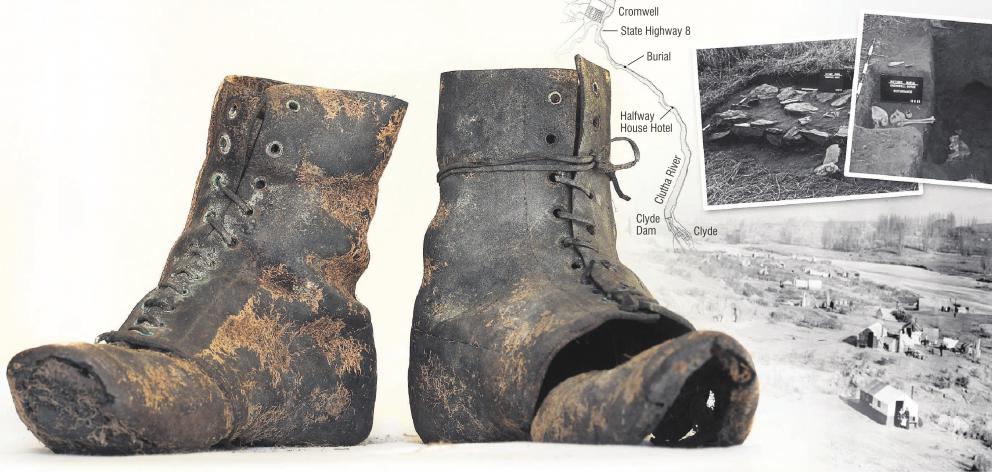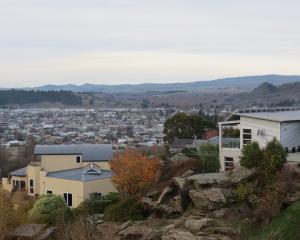
For the past four decades the skeletal remains — and boots — of the unknown man, exhumed from a grave above the Clutha River in the Cromwell Gorge, have been kept in the University of Otago’s Anatomy Department.
Yet that was not the first time the man had been disturbed, archaeologist and independent researcher Dr Neville Ritchie, of Hamilton, who discovered the remains, was quick to find out.
In 1983, Dr Ritchie was the director of the Ministry of Works archaeological programme for the Clutha Valley Development Project, which eventually resulted in the Clyde Dam.
A rescue excavation was sparked by an orchardist who said a man who drowned in the river was buried on his land, and the grave lay in the path of the yet-to-be-constructed State Highway8.
"It took a fair bit of finding but it was a clear rectangular-shaped grave topped with schist about 2m long by about 1m wide."
Upon excavating the grave things took a more sinister turn.
"The top half of his body, his skull, his ribs and the like were all higgledy-piggledy, some of the bones were outside the grave, but from the waist down he was intact and he was still wearing his boots," Dr Ritchie said
The grave also lacked other items such as buttons you would typically expect to find and the remains of his fragile wooden casket was also lacking fixtures such as handles, he said.
The grave had been robbed.
The remains — known as "E224" — were sent to the Medical School at the University of Otago where it it was determined they belonged to a middle-aged European man.
They have stayed in the anatomy department ever since.
Advances in technology mean it is now possible to coax more answers from the remains.
Two papers published in the Journal of Pacific Archaeology last month take two approaches to telling the man’s story.
One outlines the historical background, archaeological excavation, material culture, the social and historical context of the man’s life and death and the grave robbing.
It was the other, Otago University anatomy department professor and bioarchaeologist Dr Hallie Buckley said, that gave the clearest picture yet of who he was.
Using a bioarchaeological approach, molecular and chemical evidence was found showing he was between 30 and 50-years-old, at 189cm was unusually tall for the time, and isotopes in his teeth pointed to him having come from central or southern England, northern France or Denmark.
University of Otago archaeology department Southern Archaeology director and honorary research fellow Peter Petchey said
grave robbing was something new that had not been recorded before in the goldfields.
"Maybe someone at the pub heard of his death and thought he was buried with his gold."
The boots were "classic late Victorian" and put the man’s death at anywhere between the height of the gold rush through to the late 19th century.
Dr Petchey believed the man had delivered as much information as he could from beyond the grave, and the work of those tasked with taking care of him had ended.
That had led to approaches to both Contact Energy and the Central Otago District Council to look at reburial and those negotiations were continuing, he said.












